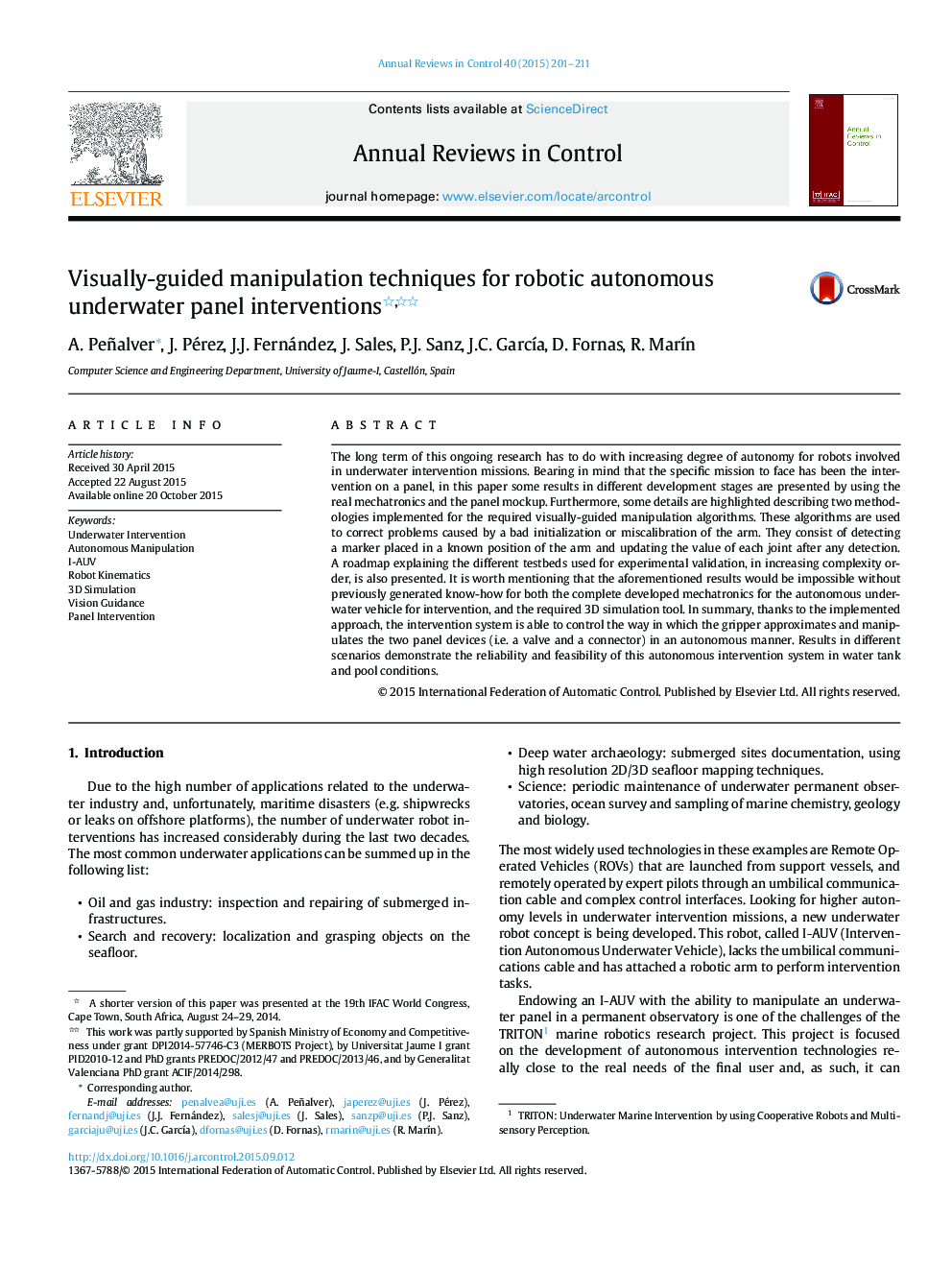| Article ID | Journal | Published Year | Pages | File Type |
|---|---|---|---|---|
| 7108053 | Annual Reviews in Control | 2015 | 11 Pages |
Abstract
The long term of this ongoing research has to do with increasing degree of autonomy for robots involved in underwater intervention missions. Bearing in mind that the specific mission to face has been the intervention on a panel, in this paper some results in different development stages are presented by using the real mechatronics and the panel mockup. Furthermore, some details are highlighted describing two methodologies implemented for the required visually-guided manipulation algorithms. These algorithms are used to correct problems caused by a bad initialization or miscalibration of the arm. They consist of detecting a marker placed in a known position of the arm and updating the value of each joint after any detection. A roadmap explaining the different testbeds used for experimental validation, in increasing complexity order, is also presented. It is worth mentioning that the aforementioned results would be impossible without previously generated know-how for both the complete developed mechatronics for the autonomous underwater vehicle for intervention, and the required 3D simulation tool. In summary, thanks to the implemented approach, the intervention system is able to control the way in which the gripper approximates and manipulates the two panel devices (i.e. a valve and a connector) in an autonomous manner. Results in different scenarios demonstrate the reliability and feasibility of this autonomous intervention system in water tank and pool conditions.
Related Topics
Physical Sciences and Engineering
Engineering
Control and Systems Engineering
Authors
A. Peñalver, J. Pérez, J.J. Fernández, J. Sales, P.J. Sanz, J.C. GarcÃa, D. Fornas, R. MarÃn,
